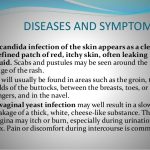
An aspergilloma of the lung may develop in individuals who have preexisting cavitary lung disease caused by conditions such as tuberculosis, sarcoidosis, silicosis, or bronchiectasis. Also known as a fungus ball or mycetoma, aspergillomas can be regarded as heavy Aspergillus colonization of the preexisting cavity. The most common symptom is hemoptysis, and, on rare occasions, severe or fatal hemoptysis can develop.









